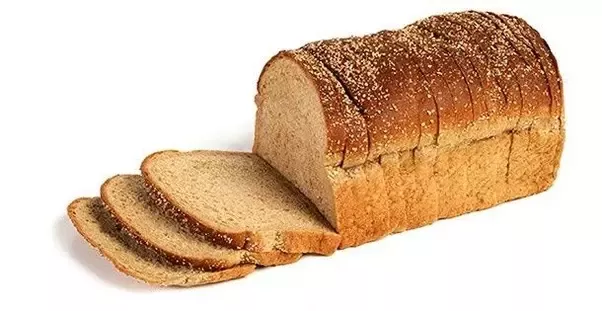April 12 (Punjab Khabarnama) : It will be extremely rare to find a house that does not consume bread (in some form), especially in today’s time. Thanks to the convenience and versatility it offers. At its most basic, bread is made with flour, salt, and water. However, depending on the brand and the recipe, some breads may also include added sugar in varying quantities.
“Commercial white bread typically has 1-2 grams of sugar per slice, or around 2-4 grams per serving (equaling two slices). However, depending on the recipe, artisanal or handcrafted white bread may have very little or no added sugar,” said Sushma PS, dietitian, Jindal Naturecure Institute.
According to the USDA National Nutrient Database, one slice of commercially prepared white bread has 1.4-3.0 grams of sugar. “In a sandwich with two slices of white bread, expect nearly 2.8-6 grams of sugar from the bread alone. It is rather high in calories and carbs but low in protein, fat, fibre, vitamins, and minerals,” said Vinita Singh Rana, senior dietician, Apollo Hospitals, Ahmedabad.
Notably, bread’s high carb content can increase blood sugar and hunger while possibly leading to a higher body weight and an increased risk of diabetes and metabolic syndrome.
However, the nutrient profile can vary widely across different types of breads. For example, whole-wheat bread may boast a higher amount of fibre, while sprouted grains are richer in beta-carotene and vitamins C and E, said Rana. A loaf or a single packet of normal slice bread is roughly 500g.
Explaining the math, Pooja Shah Bhave, consultant clinical dietician and diabetes educator, Mumbai said, “So, a loaf of bread (considered 500 grams) will have 275g carbohydrates from starch — equivalent to 55 tsp. of sugar and 5 tsp. of added sugar (an additional 25g carbohydrate). The entire packet has about 14 slices of bread. A person on average eats about 4 slices of white bread, so he can easily consume 140g of white bread which provides 84g of carbohydrates out of which 7g is roughly added sugar (1 ¼ tsp. sugar) and 77g from starch which is equivalent to 15tsp. of sugar,” said Bhave.
When producers use yeast to make bread rise, they usually add some sugar to “feed” the yeast and sodium bicarbonate to bake it. These added sugars used in the dough-making process can include sucrose, high-fructose corn syrup, maltose, or other sweeteners, Sushma shared. According to Rana, “Some commercial bread types contain more sugar than is necessary to make it rise”. Sushma also noted that some bread manufacturers also “add sugar for flavour enhancement and to promote browning during baking”.
How to check the nutrition profile?
To find out the precise amount of sugar in bread, experts urge checking the nutrition label.
“A person can check the nutrition label to see the number of carbs and added sugars in a slice of bread,” said Rana. Since ingredients are written in descending weight order, a significant added sugar content is probably present in the bread if sugar is listed towards the top of the list. “Remember that even bread that is labelled ‘sugar-free’ or ‘low sugar’ may have trace levels of natural sugars from the flour,” said Sushma
Dos and Don’ts when buying bread
Dos
- Choose whole-grain varieties — the first ingredient on the label should be “whole”. Examples include whole wheat, whole oats etc.
- Look for bread that contains at least 3g of fibre per slice.
- If you’re using two slices of bread to make a sandwich, make sure each slice has less than 100 calories. “If your bread contains more than 100 calories per slice, use it for open-faced sandwiches, with just one slice.
- Pair bread with protein to reduce postprandial (after-meal) blood sugars and make you feel more full. “Try chopped egg, or sliced chicken with vegetables,” said Rana.
Don’ts
- Don’t opt for white bread or other choices made with white flour.
- Don’t be fooled by labels that say “multigrain” or “seven grain.” If the first ingredient on the nutrition label doesn’t say “whole,” it’s not whole-grain bread.
- Don’t eat bread by itself without protein, as this can cause blood sugars to spike.
What to keep in mind?
Rana generally suggests avoiding white bread as often as you can. “White bread is heavily refined, it is rarely nutritious. All the fibre is removed in the refining process. Some of these breads contain 10% of your daily recommended carbohydrate allowance in one slice,” cautioned Rana.
Eating bread with added sugar in moderation is acceptable while following a balanced diet. However, consuming too much-added sugar can aggravate conditions like heart disease, type 2 diabetes, and obesity. “Consequently, it’s critical to be aware of how much sugar you consume overall from all sources, including bread, and to choose whole grain or artisanal bread wherever it’s feasible for a healthier choice,” Sushma said.



